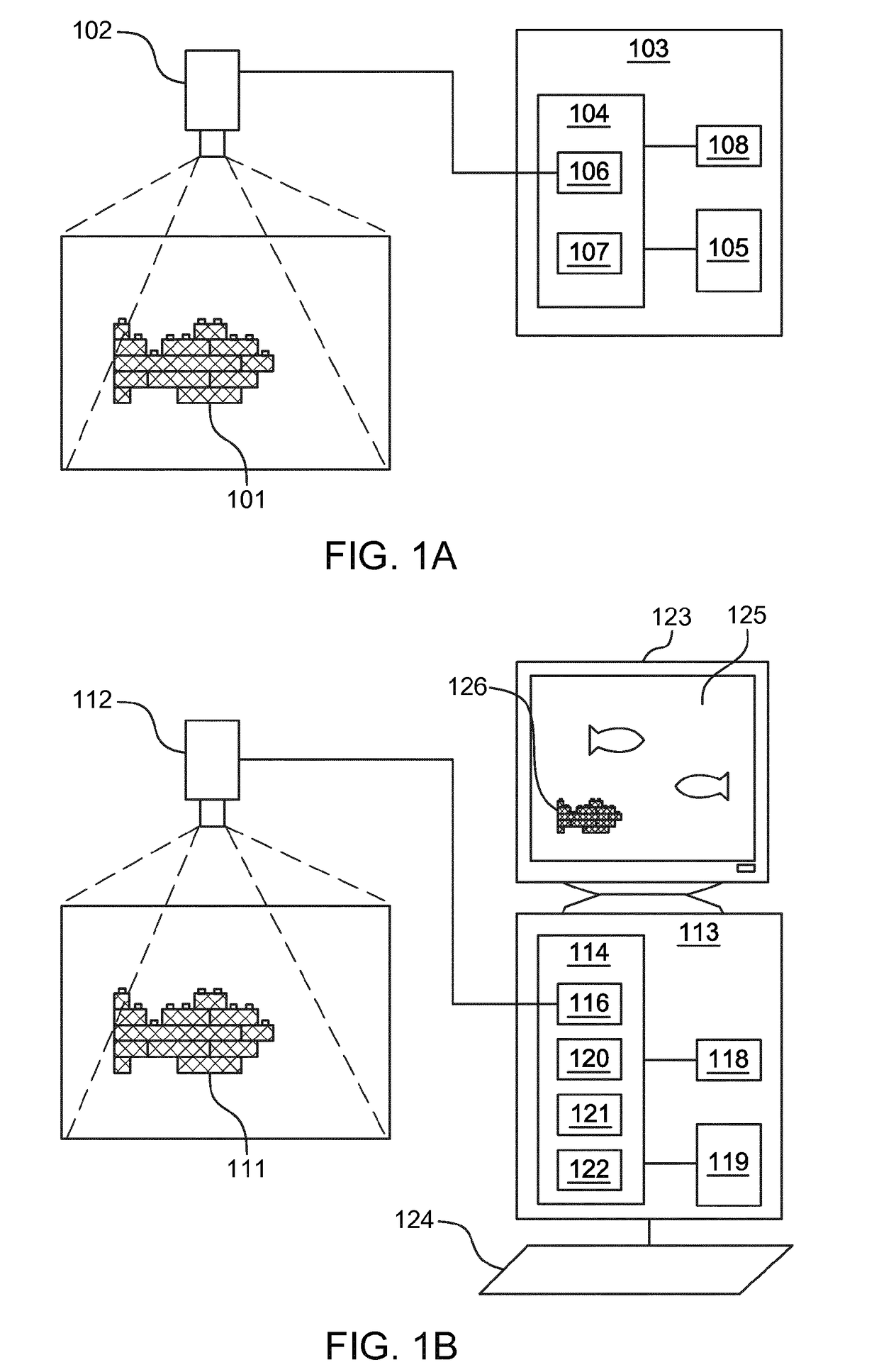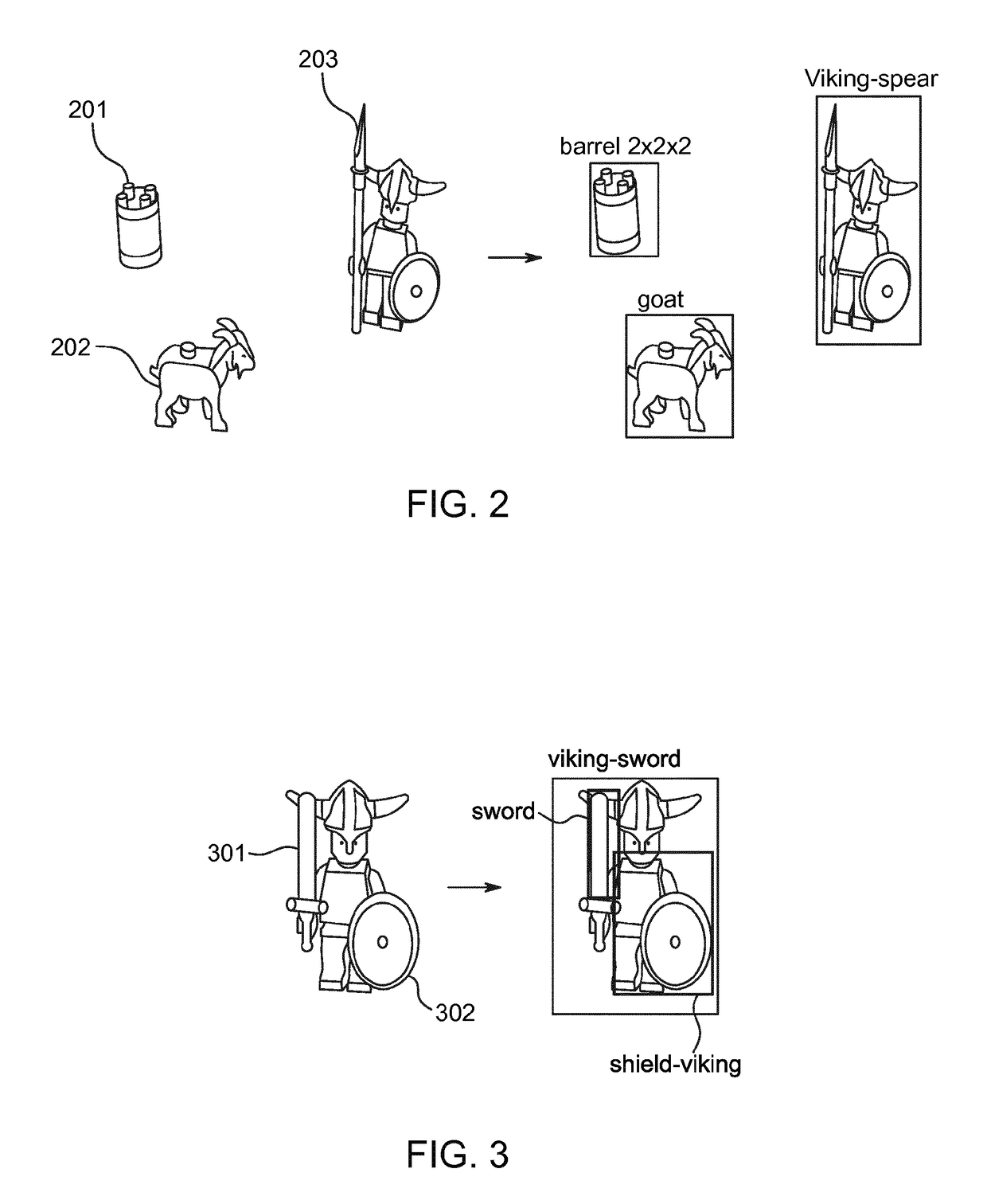System and method for toy recognition
a toy recognition and system technology, applied in the field of system and method for toy recognition, can solve the problems of false recognition by the recognition module, the inability to stimulate the development of different skills by children's game playing, and the inability to detect toy objects involving modular toy construction elements in an efficient yet reliable and robust manner, so as to achieve accurate and robust object recognition, good performance, and reliable recognition method
- Summary
- Abstract
- Description
- Claims
- Application Information
AI Technical Summary
Benefits of technology
Problems solved by technology
Method used
Image
Examples
example 1
[0159]In the first example, a convolutional neural network comprises an input layer followed by a first convolutional layer. The first convolutional layer includes 128 filters of size 13*13. A stride of two pixels is used. This allows the capturing of many relatively complex features like various edges and texture patterns although one would expect simple features on the input. Detailed inspection of the learned features in this first layer showed patterns tuned for detecting small but complex patterns, e.g. patterns printed on minifigures, and gradients between specific colors of the toy objects. The first convolutional layer is followed by a max-pooling layer with size 3*3 and stride 2. The second convolutional layer includes 128 filters of size 7*7. Six additional 3*3 convolutional layers with max-pooling after each two consecutive layers are used, and the number of filters doubles at each second layer. Local response normalization is used after only the first two convolutional l...
example 2
[0160]In the second example, different sizes of convolutional filters are used, and the network is less deep than in the first example. Moreover, the interconnected layers have fewer neurons so as to lower the memory footprint of the model and enabling faster loading and prediction during runtime on devices with fewer computational resources. This architecture has proven to be especially successful in classification of monochromatic toy construction elements with many plain surfaces (like bricks and other toy construction elements). The network starts with 64 11*11 convolution filters. The second layer counts 64 5*5 filters followed by a 2*2 max pooling layer. The consecutive four layers have 3*3 filter size and max-pooling is performed after each two consecutive convolutions. The number of filters doubles at each second layer. In total six convolutional layers and three max-pooling layers are followed by two interconnected layers counting 384 and 512 neurons, respectively. Througho...
example 3
[0161]Implementing several consecutive convolution layers with smaller filter size can significantly reduce the memory footprint due to the lower number of actual parameters that should be learned, while maintaining the same impact in terms of reception field as single-layer larger filter sizes. Additionally, this approach introduces more non-linearities between these layers thus increasing the predictive power of the overall model. The architecture of example 3 utilizes this property. Additionally, in some layers, convolution filters of different sizes are used to capture features of different granularity. The feature maps resulting from these filters are then convolved with 1*1 convolutions to combine responses across channels and reduce their number and thus the computational requirements. These 1*1 convolutions are followed by rectification to introduce additional nonlinearity and increase expressiveness of the model. The architecture begins with 64 7*7 convolutional filters fol...
PUM
 Login to View More
Login to View More Abstract
Description
Claims
Application Information
 Login to View More
Login to View More - R&D
- Intellectual Property
- Life Sciences
- Materials
- Tech Scout
- Unparalleled Data Quality
- Higher Quality Content
- 60% Fewer Hallucinations
Browse by: Latest US Patents, China's latest patents, Technical Efficacy Thesaurus, Application Domain, Technology Topic, Popular Technical Reports.
© 2025 PatSnap. All rights reserved.Legal|Privacy policy|Modern Slavery Act Transparency Statement|Sitemap|About US| Contact US: help@patsnap.com



